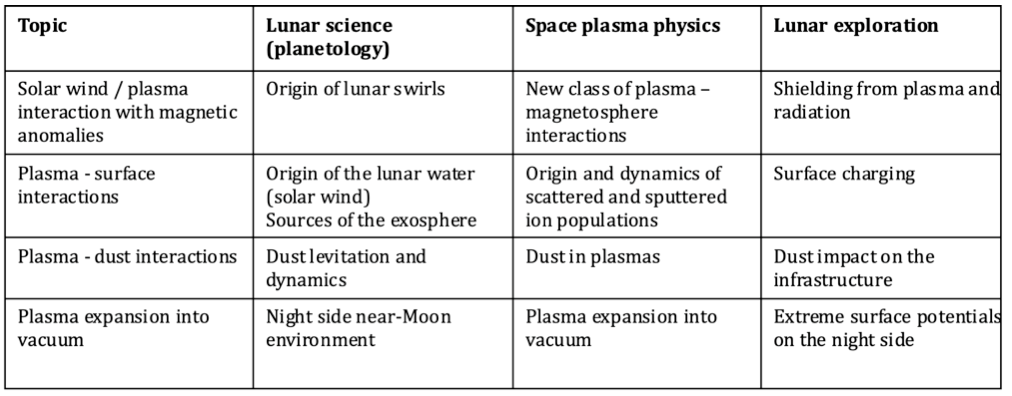The Moon is an exciting object for space plasma physics: the main science questions
- Swedish Institute of Space Physics, Kiruna, Sweden (stas@irf.se)
Traditionally the Moon is considered “boring” by space plasma physicists. Indeed, no dense atmosphere/ionosphere, no large scale magnetic field, and the solar wind absorption by non-conductive surface make this body an outcast among “exciting” objects being the primary interest for space plasma physics. However, lunar exploration for the last 20 – 25 years revealed a completely different picture of our only satellite. The Moon is non-magnetized body but possesses magnetic anomalies, localized (mostly on the far side) magnetic field structures of <300 nT with a a size of 100 km, smaller than a proton gyroradius but larger than an electron one, perfect hybrid objects! The Moon is an airless body but has a tenuous exosphere with densities up to 105 cm-3 that are a source of heavy pick-up ions. The lunar surface covered by non-conductive regolith is rough and absorbing but significant particle reflection occurs both as ions and neutrals. The Moon is a large body of 1740 km radius but a zoo of kinetic effects was identified, in particular, when plasma expands into vacuum, e. g., the wake or voids related to local topography such as permanently shadowed regions. The Moon spends 75% of the orbital period in the solar wind but experiences highly variable plasma environments inside the magnetosphere. At the surface dust particles interact strongly with near-surface plasma that defines their dynamics.
We formulate four main unique overarching science questions for space plasma physics at the Moon (“the main four”):
- How do the solar wind and magnetospheric plasmas interact with magnetic anomalies?
- How does near-Moon plasma expand into vacuum?
- How does plasma interact with dust at the surface?
- How does the plasma - surface interactions? How does the lunar surface charge?
Research on these topics not only advance fundamental lunar science and space plasma physics but are also critical for exploration as outlined in the table below. The Moon is not “boring”! We need dedicated space plasma missions to the Moon.

How to cite: Barabash, S.: The Moon is an exciting object for space plasma physics: the main science questions, Europlanet Science Congress 2024, Berlin, Germany, 8–13 Sep 2024, EPSC2024-279, https://doi.org/10.5194/epsc2024-279, 2024.